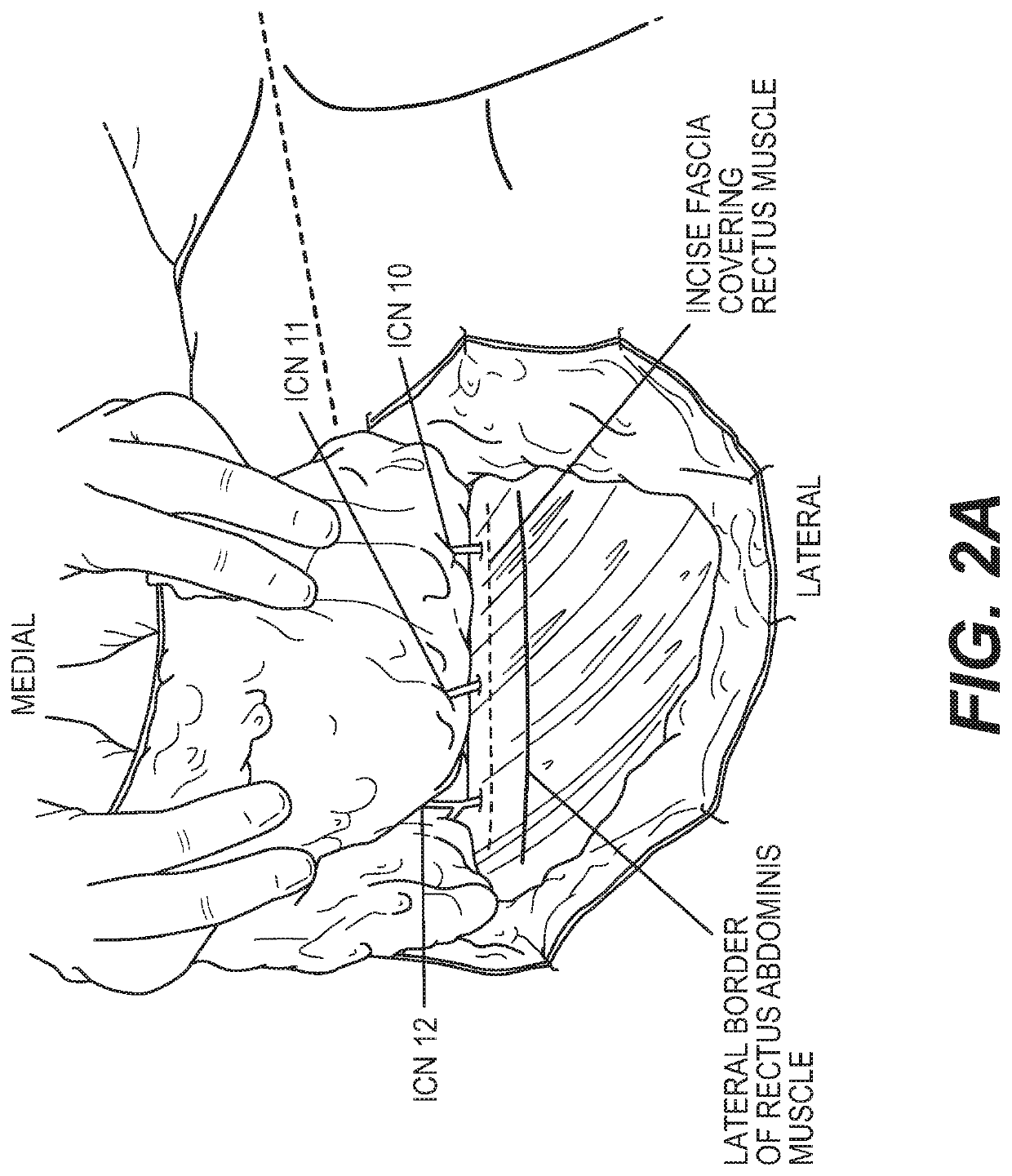Materials and methods for nerve repair with animal-sourced grafts
a technology of animal-sourced grafts and nerves, applied in the field of animal-sourced grafts and nerve repair materials, can solve the problems of affecting patient-rated quality of life metrics, affecting the quality of life of patients, and abdominal wall weakness, so as to achieve the effect of mitigating the risks of conventional surgical methods
- Summary
- Abstract
- Description
- Claims
- Application Information
AI Technical Summary
Benefits of technology
Problems solved by technology
Method used
Image
Examples
example 1
Methods of the Invention
[0055]Preoperative markings were made with the patient standing. The patient is subsequently brought to the operating room and placed in supine position with bilateral arms abducted. The abdominal flap (FIG. 1) is dissected in a standard lateral to medial fashion until lateral row perforators and associated intercostal nerves are exposed (FIGS. 2A-2B). The anterior rectus sheath is incised craniocaudally along the lateral row perforators to expose the rectus abdominis muscle, lateral perforator vessels, and intercostal nerves (ICN) 11 and ICN12 (FIGS. 3A-3B).
[0056]Upon identification of ICN11 and / or ICN12, next to the lateral row of vascular perforators, standard retrograde dissection of the sensory branch of the intercostal nerve ICN11 and / or ICN12 is traced until a sensory-motor Y-junction is encountered. While this may be seen intra- or retro-muscularly, the exposure can be accomplished by longitudinal spread rather than transection of the rectus muscle fi...
example 2
s Provided by the Surgical Methods of the Invention
[0063]Homogeneity of a surgical approach is critical to reliably comment on the efficacy of a procedure or a procedural concept such as breast neurotization. Hence, establishing a standardized surgical technique is important to facilitate future homogenous comparative analysis. A clear understanding of the principles of nerve surgery as well as expertise regarding the characteristics of available reconstructive choices like nerve conduits, autografts, and processed nerve allografts are critical for successful execution of this proposed procedure.
[0064]Standard treatment of nerve injuries consists of tensionless primary repair whenever possible. However, if primary repair is not possible, then bridging materials are utilized, which include nerve autografts, tube conduits, and processed nerve allografts. The nerve gap encountered with breast neurotization typically measures between 50 to 70 mm, thus, far exceeding the length that is r...
PUM
 Login to View More
Login to View More Abstract
Description
Claims
Application Information
 Login to View More
Login to View More - R&D
- Intellectual Property
- Life Sciences
- Materials
- Tech Scout
- Unparalleled Data Quality
- Higher Quality Content
- 60% Fewer Hallucinations
Browse by: Latest US Patents, China's latest patents, Technical Efficacy Thesaurus, Application Domain, Technology Topic, Popular Technical Reports.
© 2025 PatSnap. All rights reserved.Legal|Privacy policy|Modern Slavery Act Transparency Statement|Sitemap|About US| Contact US: help@patsnap.com



